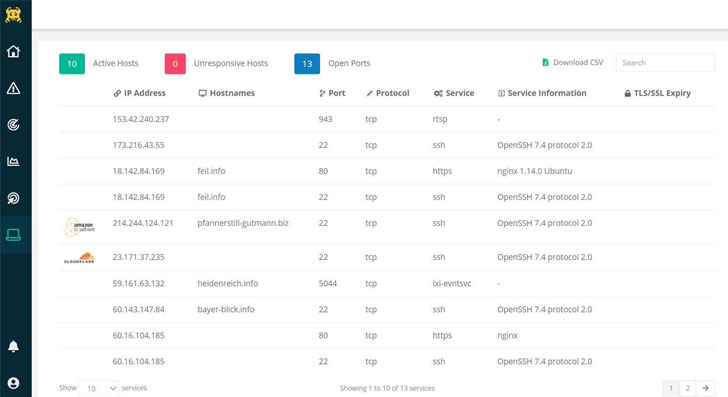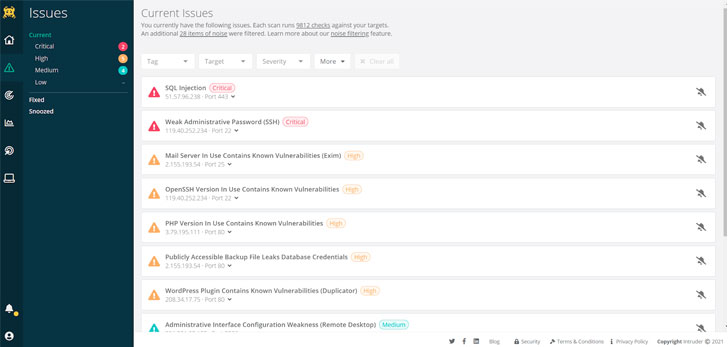Hackers are scanning the internet for weaknesses all the time, and if you don't want your organization to fall victim, you need to be the first to find these weak spots. In other words, you have to adopt a proactive approach to managing your vulnerabilities, and a crucial first step in achieving this is performing a vulnerability assessment.
Read this guide to learn how to perform vulnerability assessments in your organization and stay ahead of the hackers.
Vulnerability assessment tools
Vulnerability assessments are automated processes performed by scanners. This makes them accessible to a wide audience. Many of the scanners are geared towards cybersecurity experts, but there are solutions tailored for IT managers and developers in organizations without dedicated security teams.
Vulnerability scanners come in various types: some excel at network scanning, others at web applications, IoT devices, or container security. If you're a small business, you're likely to find a single vulnerability scanner covering all or most of your systems. However, larger companies with complex networks may prefer to combine multiple scanners to achieve the desired level of security.
How do you perform a vulnerability assessment?
With the right tools in hand, you can perform a vulnerability assessment by working through the following steps:
1. Asset discovery
First, you need to decide what you want to scan, which isn't always as simple as it sounds. One of the most common cybersecurity challenges facing organizations is a lack of visibility into their digital infrastructure and its connected devices. Some reasons for this include:
Mobile Devices: Smartphones, laptops, and similar devices are designed to disconnect and reconnect frequently from the office, as well as employee's homes and often other remote locations. IoT Devices: IoT devices are part of the corporate infrastructure but may be connected primarily to mobile networks. Cloud-Based Infrastructure: Cloud service providers make it easy to spin up new servers as needed without IT involvement.We'd all love to work in an organization that was perfectly organized, but the reality is often messier. It can be hard simply to keep track of what different teams are putting online, or changing, at any given point. This lack of visibility is problematic because it's difficult to secure what you can't see. Luckily, the discovery aspect of this process can be largely automated.
For example, some modern vulnerability assessment tools, such as Intruder, can perform discovery on public-facing systems and connect directly to cloud providers to identify cloud-based infrastructure.
 |
| Screenshot of Intruder's network page showing discovered systems |
2. Prioritization
Once you know what you've got, the next question is whether you can afford to run a vulnerability assessment on all of it. In a perfect world, you would be running a vulnerability assessment regularly on all of your systems. However, vendors often charge per-asset, so prioritization can help where budgets can't cover every asset the company owns.
Some examples of where you may wish to prioritize are:
Internet-facing servers Customer-facing applications Databases containing sensitive informationIt's worth noting that the two of the most common vectors for untargeted or mass attacks are:
Internet-facing systems Employee laptops (via phishing attacks)So if you can't afford anything else, at least try to get these covered in the same order.
3. Vulnerability scanning
Vulnerability scanners are designed to identify known security weaknesses and provide guidance on how to fix them. Because these vulnerabilities are commonly publicly reported, there is a lot of information available about vulnerable software.
Vulnerability scanners use this information to identify vulnerable devices and software in an organization's infrastructure. The scanner initially sends probes to systems to identify:
Open ports & running services Software versions Configuration settingsBased on this information, the scanner can often identify many known vulnerabilities in the system being tested.
In addition, the scanner sends specific probes to identify individual vulnerabilities, which can only be tested by sending a safe exploit that proves the weakness is present.
These types of probes may identify common vulnerabilities such as 'Command Injection' or 'cross-site scripting (XSS)' or the use of default usernames and passwords for a system.
Depending on the infrastructure that you're scanning (and particularly how expansive any websites are), the vulnerability scan may take anywhere from a few minutes to a few hours.
4. Result analysis & remediation
After the vulnerability scan is complete, the scanner provides an assessment report. When reading and developing remediation plans based on this report, you should consider the following:
Severity: A vulnerability scanner should label a potential vulnerability based upon its severity. When planning for remediation, focus on the most severe vulnerabilities first, but avoid ignoring the rest forever. It's not uncommon for hackers to chain several mild vulnerabilities to create an exploit. A good vulnerability scanner will suggest timelines for when to fix each issue. Vulnerability Exposure: Remembering the prioritization above - not all vulnerabilities are on public-facing systems. Internet-facing systems are more likely to be exploited by any random attacker scanning the internet, making them a higher priority for remediation. After that, you'll want to prioritize any employee laptops with vulnerable software installed. Additionally, any systems that host particularly sensitive data or could adversely affect your business may need to be prioritized ahead of others.In most cases, there is a publicly released patch to correct a detected vulnerability, but it can often require a configuration change or other workaround too. After applying a fix, it's also a good idea to rescan the system to ensure the fix was applied correctly.
If it isn't, the system may still be vulnerable to exploitation. Also, if the patch introduces any new security issues, such as security misconfigurations (although rare), this scan may uncover them and allow them to be corrected as well.
 |
| Intruder uses a unique algorithm to prioritize issues that leave your systems exposed, making it particularly easy to find out what presents the highest risk. |
5. Continuous cyber security
A vulnerability scan provides a point-in-time snapshot of the vulnerabilities present in an organization's digital infrastructure. However, new deployments, configuration changes, newly discovered vulnerabilities, and other factors can quickly make the organization vulnerable again. For this reason, you must make vulnerability management a continuous process rather than a one-time exercise.
Since many vulnerabilities are introduced when software is developed, the most progressive software development companies integrate automated vulnerability assessments into their continuous integration and deployment (CI/CD) pipelines.
This allows them to identify and fix vulnerabilities before the software is released, avoiding the potential for exploitation and the need to develop and ship patches for vulnerable code.
To conclude
Regular vulnerability assessments are critical to a strong cybersecurity posture. The sheer number of vulnerabilities that exist and the complexity of the average company's digital infrastructure mean an organization is almost guaranteed to have at least one unpatched vulnerability that places it at risk.
Finding these vulnerabilities before an attacker can mean the difference between a failed attack and a costly and embarrassing data breach or ransomware infection.
One of the great things about vulnerability assessments is that you can do it yourself and even automate the process. By getting the right tools and performing regular vulnerability scans, you can dramatically decrease your cybersecurity risk.
The Intruder vulnerability assessment platform
Intruder is a fully automated vulnerability assessment tool designed to check your infrastructure for upwards of 10,000 known weaknesses. It's designed to save you time by proactively running security scans, monitoring network changes, synchronizing cloud systems, and more. Intruder generates a report outlining the issues and offering actionable remediation advice – so you can find and fix your vulnerabilities before hackers reach them.
Intruder offers a 30-day free trial of their vulnerability assessment platform. Visit their website today to take it for a spin!
Found this article interesting? Follow THN on Facebook, Twitter and LinkedIn to read more exclusive content we post.
.png)
 3 years ago
155
3 years ago
155 
















 Bengali (Bangladesh) ·
Bengali (Bangladesh) ·  English (United States) ·
English (United States) ·